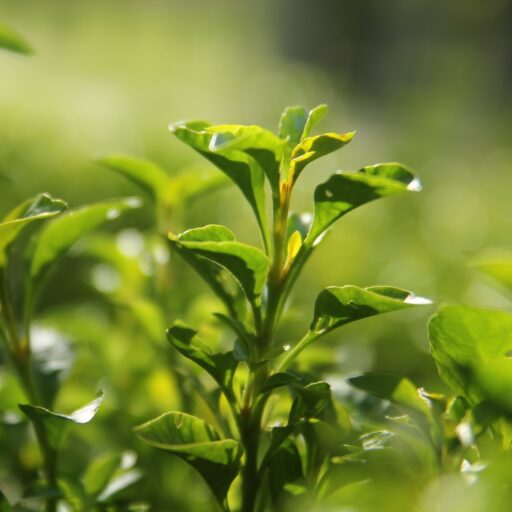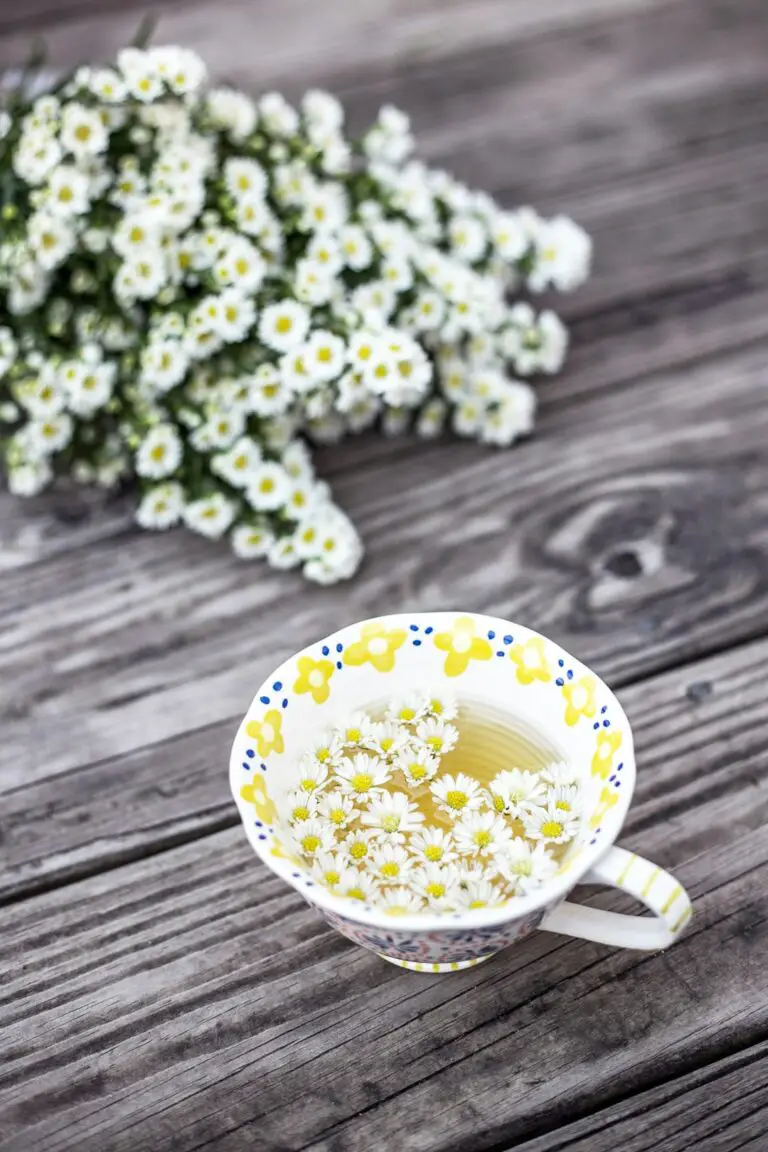Support our educational content for free when you purchase through links on our site. Learn more
How Long Does a Tea Plant Take to Grow from Seed? [2024]
Have you ever wondered how long it takes for a tea plant to grow from a seed? Growing your own tea can be a rewarding and fulfilling experience, but it requires patience and knowledge. In this article, we will explore the timeline of a tea plant’s growth from seed and provide you with expert tips and advice to help you successfully cultivate your own tea plants. So, let’s dive in and discover the fascinating journey of a tea plant from seed to harvest!
Table of Contents
- Quick Answer
- Quick Tips and Facts
- Background: The Journey of a Tea Plant
- How Long Does Tea Take to Grow from Seed?
- How Long Does a Tea Tree Take to Grow?
- Is Growing Tea Leaves Hard?
- Is Tea Easy to Grow?
- FAQ
- Conclusion
- Recommended Links
- Reference Links
Quick Answer
Growing a tea plant from seed is a process that requires time and patience. On average, it takes about three years for a tea plant to grow from seed to maturity. However, it’s important to note that this timeline can vary depending on various factors such as the tea plant variety, growing conditions, and cultivation techniques.
If you’re looking to start your own tea garden, it’s recommended to purchase Camellia sinensis seeds, which are the most suitable for making black, green, and white tea. These seeds require about 2 to 3 square feet of space to grow properly. Alternatively, you can also start with a tea plant to jumpstart the growing process.
Quick Tips and Facts
Before we delve deeper into the timeline of a tea plant’s growth, here are some quick tips and interesting facts to keep in mind:
✅ Buy Camellia sinensis seeds for best results: Camellia sinensis seeds are the most suitable for growing tea plants that produce high-quality tea leaves. These seeds are readily available and can be purchased from reputable seed suppliers.
✅ Start with the plant if you want to jumpstart the growing process: If you’re eager to start growing tea plants and don’t want to wait for seeds to germinate, you can purchase a young tea plant from a nursery. This will allow you to nurture the plant indoors for about a year before moving it outside.
✅ Soak the seeds: To speed up the germination process, it’s recommended to soak the tea seeds in water for 24 to 48 hours before planting them. This helps soften the seed coat and promotes faster sprouting.
✅ Put the seeds into containers with vermiculite: After soaking the seeds, plant them in containers filled with vermiculite, which provides a suitable growing medium for the seeds. The seeds will typically germinate within 6 to 8 weeks.
✅ Keep the vermiculite damp: It’s important to keep the vermiculite damp during the germination process. Check the moisture level daily and use a spray bottle to mist the vermiculite if it starts to dry out. Be careful not to overwater, as excessive moisture can lead to fungal growth.
✅ Make sure the seeds have fully germinated: Once the seeds have germinated, you’ll notice small roots and sprouts emerging from the vermiculite. At this stage, it’s crucial to provide the seedlings with proper care and attention to ensure their healthy growth.
Now that we’ve covered some quick tips and facts, let’s explore the journey of a tea plant from seed to maturity in more detail.
Background: The Journey of a Tea Plant
Before we dive into the timeline of a tea plant’s growth, let’s take a moment to appreciate the rich history and cultural significance of tea. Tea, derived from the Camellia sinensis plant, has been enjoyed for centuries and is deeply rooted in many cultures around the world. From ancient tea ceremonies to modern tea rituals, tea has become a beloved beverage that brings people together.
Tea plants are native to regions such as China, India, and Japan, where they thrive in specific climatic conditions. The cultivation of tea requires careful attention to factors such as soil quality, temperature, humidity, and elevation. Each tea-growing region has its own unique characteristics that contribute to the flavor and aroma of the tea produced.
Now, let’s explore the timeline of a tea plant’s growth from seed to maturity.
How Long Does Tea Take to Grow from Seed?
On average, it takes about three years for a tea plant to grow from seed to maturity. However, it’s important to note that this timeline can vary depending on various factors such as the tea plant variety, growing conditions, and cultivation techniques.
During the first year of growth, tea plants focus on establishing a strong root system and developing a sturdy stem. It’s crucial to provide the young plants with proper care and attention during this stage to ensure their healthy growth. Regular watering, adequate sunlight, and protection from extreme weather conditions are essential for their well-being.
In the second year, tea plants continue to grow and develop more leaves. It’s during this stage that the plants start to resemble the familiar tea bushes we often envision. Pruning and shaping the plants can help promote bushier growth and increase the yield of tea leaves.
By the third year, tea plants reach maturity and are ready for their first harvest. The leaves are plucked, processed, and transformed into the various types of tea we enjoy. It’s important to note that the flavor and quality of the tea can improve with each subsequent harvest as the plants continue to mature.
How Long Does a Tea Tree Take to Grow?
Tea plants are often referred to as tea trees due to their tree-like appearance when fully grown. However, it’s important to note that tea plants are technically shrubs rather than trees. The term “tea tree” is commonly used to describe mature tea plants.
From the time a tea plant is first planted until it reaches its full maturity, it can take anywhere from 3 to 5 years. During this time, the plant undergoes significant growth and development, transitioning from a young sapling to a mature tea bush.
Is Growing Tea Leaves Hard?
Growing tea leaves can be a rewarding and enjoyable experience, but it does require some knowledge and effort. While tea plants are relatively hardy and can adapt to a range of growing conditions, they do have specific requirements that need to be met for optimal growth.
One of the key factors in successfully growing tea leaves is providing the right growing conditions. Tea plants thrive in well-draining soil with a slightly acidic pH level ranging from 6 to 6.5. They also require a moderate amount of sunlight, ideally receiving about 4 to 6 hours of direct sunlight each day.
Regular watering is essential for tea plants, especially during the early stages of growth. However, it’s important to avoid overwatering, as excessive moisture can lead to root rot and other fungal diseases. It’s recommended to water the plants deeply but infrequently, allowing the soil to dry out slightly between waterings.
Pruning and shaping the tea plants is another important aspect of cultivation. Regular pruning helps promote bushier growth and increases the yield of tea leaves. It also allows for better air circulation and sunlight penetration, reducing the risk of diseases.
While growing tea leaves does require some effort and attention, it can be a highly rewarding experience. The satisfaction of harvesting your own tea leaves and enjoying a cup of tea made from plants you’ve nurtured is truly unparalleled.
Is Tea Easy to Grow?
Tea plants are relatively easy to grow, especially if you provide them with the right growing conditions. With proper care and attention, you can successfully cultivate tea plants in your own garden or even in containers.
One of the advantages of growing tea plants is their adaptability to different climates. While they thrive in regions with a temperate climate, they can also be grown in subtropical and even tropical climates. However, it’s important to note that extreme temperatures and frost can damage or even kill tea plants, so it’s crucial to protect them during freezing weather.
Tea plants are also relatively low-maintenance once they are established. Regular watering, adequate sunlight, and occasional pruning are the key tasks involved in their care. With proper attention, tea plants can provide you with a bountiful harvest of fresh tea leaves for years to come.
FAQ
How long does tea take to grow from seed?
On average, it takes about three years for a tea plant to grow from seed to maturity. However, this timeline can vary depending on various factors such as the tea plant variety, growing conditions, and cultivation techniques.
Read more about “… Where to Buy Camellia Sinensis Seeds: A Comprehensive Guide”
How long does a tea tree take to grow?
From the time a tea plant is first planted until it reaches its full maturity, it can take anywhere from 3 to 5 years. During this time, the plant undergoes significant growth and development, transitioning from a young sapling to a mature tea bush.
Read more about “Will Green Tea Grow in Texas? …”
Is growing tea leaves hard?
Growing tea leaves can be a rewarding and enjoyable experience, but it does require some knowledge and effort. While tea plants are relatively hardy and can adapt to a range of growing conditions, they do have specific requirements that need to be met for optimal growth.
Is tea easy to grow?
Tea plants are relatively easy to grow, especially if you provide them with the right growing conditions. With proper care and attention, you can successfully cultivate tea plants in your own garden or even in containers.
Read more about “Is tea easy to grow?”
Conclusion
Growing tea plants from seed to maturity is a journey that requires time, patience, and knowledge. On average, it takes about three years for a tea plant to grow from seed to maturity, but this timeline can vary depending on various factors. Throughout this process, it’s important to provide the tea plants with proper care and attention, ensuring they have the right growing conditions, regular watering, and occasional pruning.
If you’re interested in embarking on the journey of growing your own tea plants, we encourage you to explore our other articles on Green Tea Cultivation, Herbal Tea Planting, Tea Plant Varieties, and Soil and Climate for Tea for further guidance and information.
Remember, the satisfaction of harvesting your own tea leaves and enjoying a cup of tea made from plants you’ve nurtured is truly rewarding. So why not give it a try and start your own tea garden today?
Recommended Links
- Green Tea Cultivation
- Herbal Tea Planting
- Tea Plant Varieties
- Soil and Climate for Tea
- Where to Buy Camellia Sinensis Seeds: A Comprehensive Guide








